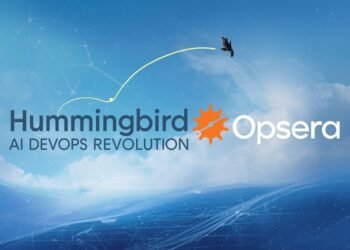In 2025, the enterprise software stack is no longer just cloud-based—it’s intelligent. Artificial intelligence is now embedded in everything from CRM systems to email security platforms. At the same time, SaaS applications continue to dominate every function across modern businesses.
But this rapid convergence of SaaS and AI has outpaced traditional security models. Companies are now dealing with a new kind of attack surface—one that’s invisible, constantly shifting, and often misunderstood.
That’s where unified SaaS AI security platforms come in.
They’re not just another tool in the tech stack. These platforms represent a new era in cybersecurity—where human identities, AI agents, applications, and data all need to be protected together under a single pane of glass.
The Expanding Attack Surface: Human + AI
Legacy security tools were built for a simpler time—when threats came through endpoints or email, and users were humans. Today, those assumptions no longer apply.
AI agents can now:
-
Write and deploy code in your dev environment
-
Access sensitive databases through integrations
-
Interact with customers autonomously
-
Operate inside shared SaaS environments undetected
Meanwhile, human users continue to create new risks via misconfigurations, shadow IT, and unauthorized AI tools.
When AI is layered on top of SaaS without proper oversight, you get a perfect storm of unmonitored access, data exposure, and compliance risk.
Why Traditional Security Tools Are Failing
Here’s the problem: existing security tools often treat SaaS and AI separately—if they recognize AI at all.
-
CASBs (Cloud Access Security Brokers) provide visibility into SaaS but miss AI agent behavior.
-
SIEMs can ingest logs, but without context, they don’t distinguish human vs. AI-driven actions.
-
IAM tools handle user authentication, but struggle to model AI identities or dynamic permissions.
The result? Blind spots everywhere. And attackers are taking advantage—using AI-powered malware, hijacking AI credentials, and exploiting configuration drift inside apps like Slack, Salesforce, or Notion.
Without unified visibility, organizations are flying blind.
What Unified SaaS AI Security Platforms Deliver
New security platforms like Vorlon and others are changing the game by bringing together AI security and SaaS posture management in one solution.
Here’s what they deliver:
1. Full Visibility Across Human and AI Activity
Track which users and AI agents are accessing which applications, what data they touch, and how frequently. Map this across the enterprise to find anomalies in real time.
2. Shadow AI and Unmanaged Integrations
Automatically discover third-party AI tools connected to your SaaS apps—often installed by business users without IT approval. Detect rogue chatbots, code-writing assistants, and browser extensions with access to sensitive content.
3. Posture and Configuration Monitoring
These platforms monitor security settings across your SaaS stack and flag drift. For example, if an AI model suddenly gains admin access or if Slack channels become publicly shared, the system alerts your team.
4. Unified Policy and Enforcement
Set one policy that applies across both human and AI identities. Enforce MFA, data access controls, and anomaly-based responses—automatically.
5. Compliance and Governance Automation
Generate audit-ready logs that capture AI interactions, data flows, and SaaS configurations. This supports frameworks like SOC 2, ISO 27001, GDPR, and emerging AI safety laws.
Real-World Use Case: Securing AI Inside Salesforce
Imagine a company using an AI sales assistant inside Salesforce. It accesses contact data, creates notes, and even drafts emails to leads.
If that assistant’s API credentials are compromised—or if a misconfigured setting allows it access to all deal data across teams—the risk is massive. Traditional Salesforce security tools won’t detect anything suspicious because the AI agent is “just another user.”
But a unified SaaS AI security platform would:
-
Detect anomalous access patterns from the AI assistant
-
Compare its behavior against historical baselines
-
Alert the security team when it overreaches
-
Lock the account or revoke its API key automatically
This kind of proactive defense is the future.
Why This Matters for Compliance and Risk Leaders
Regulators are not waiting.
New legislation like the EU’s AI Act, the U.S. Executive Order on Safe AI, and industry-specific rules (like in finance or healthcare) are demanding that companies govern their AI usage—especially when it interacts with customer data.
Boards and CISOs are asking hard questions:
-
Who controls our AI systems?
-
What data are they accessing?
-
Can we show proof of governance?
Unified platforms provide the answers—instantly, and at scale.
The Market Is Moving Fast
According to a recent Gartner report, by 2026, over 70% of enterprises will require unified SaaS + AI security platforms to meet internal and regulatory standards.
Startups like Vorlon, Push Security, and Obsidian Security are racing to fill the gap, while major players like Palo Alto Networks and Cisco are beginning to acquire smaller innovators in this space.
CISOs are realizing: if your security tools can’t see AI, they can’t secure the business.
Conclusion: Innovation Needs Guardrails
The future of enterprise software is AI-native. But you can’t have innovation without protection.
Unified SaaS AI security platforms give organizations the ability to move fast—without breaking trust, leaking data, or failing compliance audits.
These platforms are more than just a trend—they are quickly becoming a core part of the modern security stack, right alongside EDR, firewalls, and SIEM.
If you’re adopting AI and using SaaS, you need unified security. Period.


















